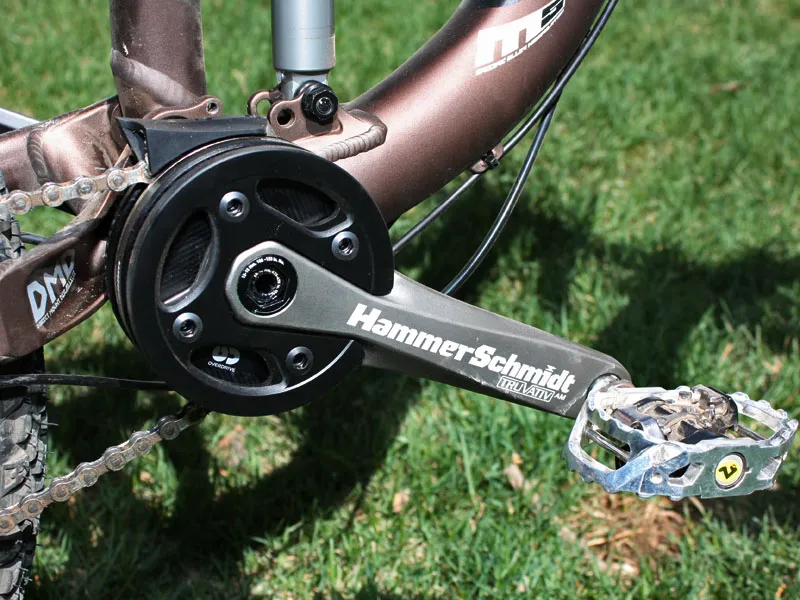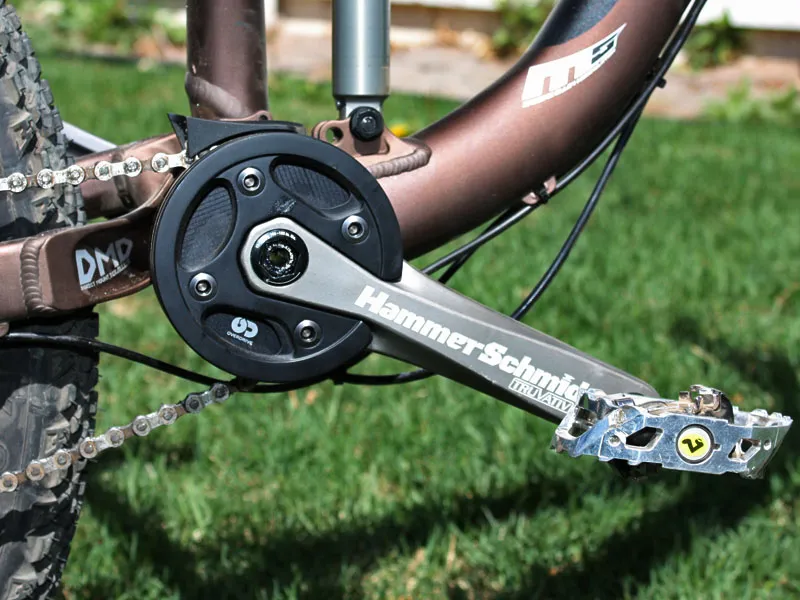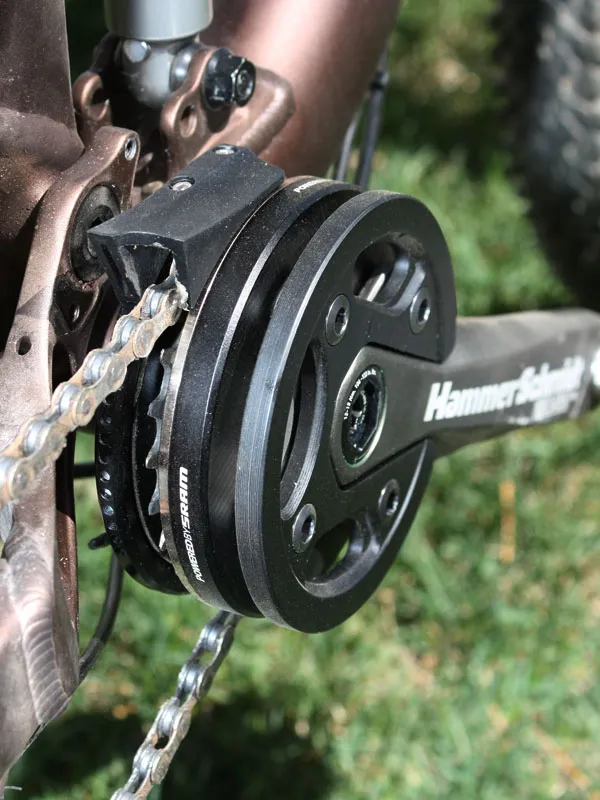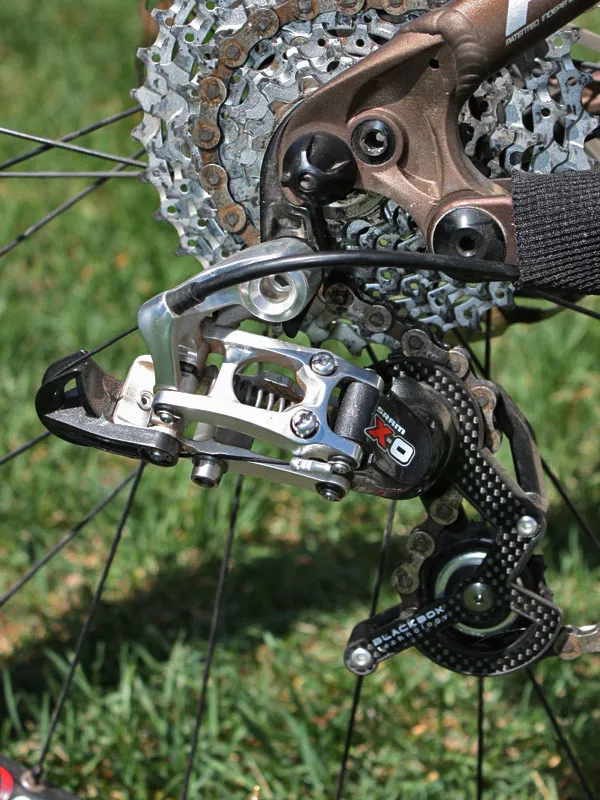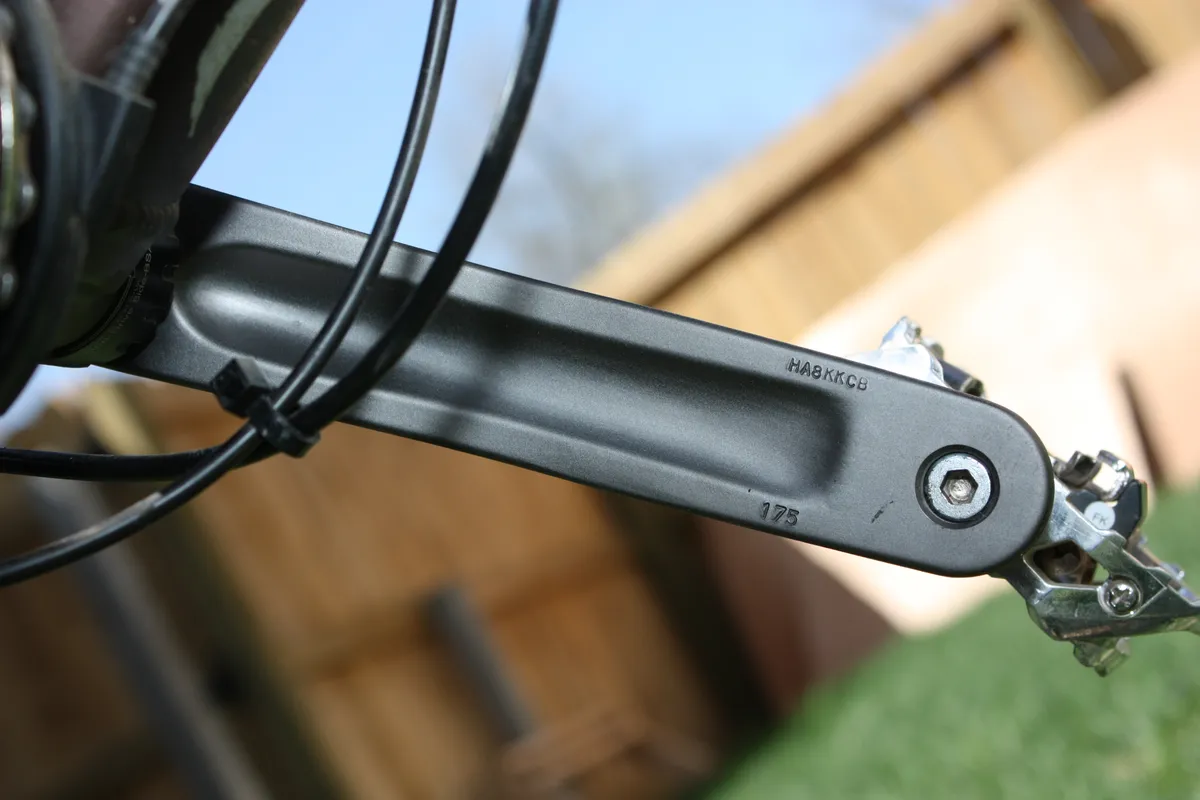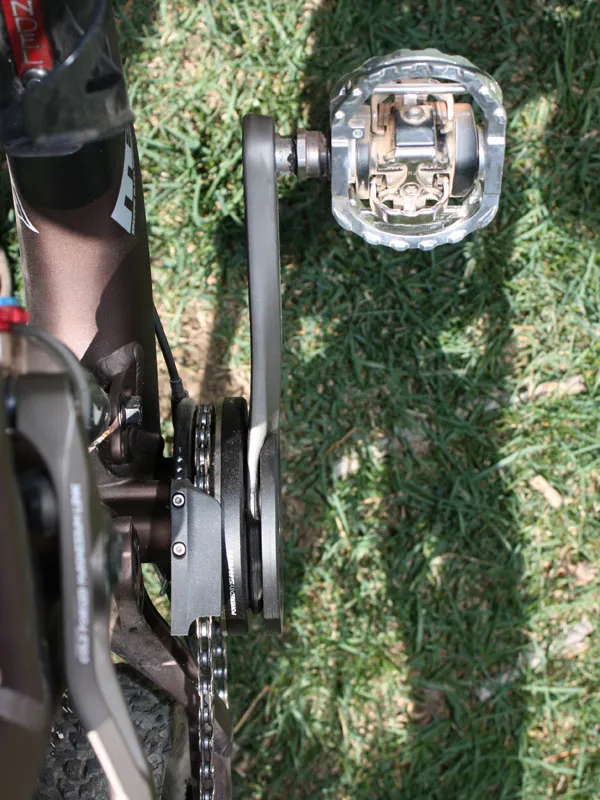Lying at the heart of the Truvativ HammerSchmidt two-speed crankset is a set of planetary gears. A trio of pawls engages or disengages those gears instantly with a flick of the trigger-style shifter to swap between gear ratios of 1:1 or an 'OverDrive' ratio of 1:1.6.
Mount up the included 22T proprietary chainring and you effectively have a 22/35T combo (or a 24/38T with the alternative 24T ring), all without the need for a conventional front derailleur.
Your chain never leaves one cog for another, making it just the thing for all-mountain riders seeking a stouter and more reliable setup in rougher terrain.
By 'right now' we mean 'RIGHT NOW'
Shifting on the HammerSchmidt is so quick that it actually requires a few rides to get used to its immediacy – and not just because the action on the shifter is opposite from standard SRAM trigger units.
Seasoned riders become used to the split second it normally takes for a chain to move between chainrings but with HammerSchmidt there is no delay whatsoever. As soon as your finger completes the movement up top, the desired gear is engaged and you never miss a beat.
Even better, you do not have to let up on the power even a little bit while shifting in either direction. Hammer as hard as you want and it still works (try that with your conventional front derailleur setup – or better yet, don't).
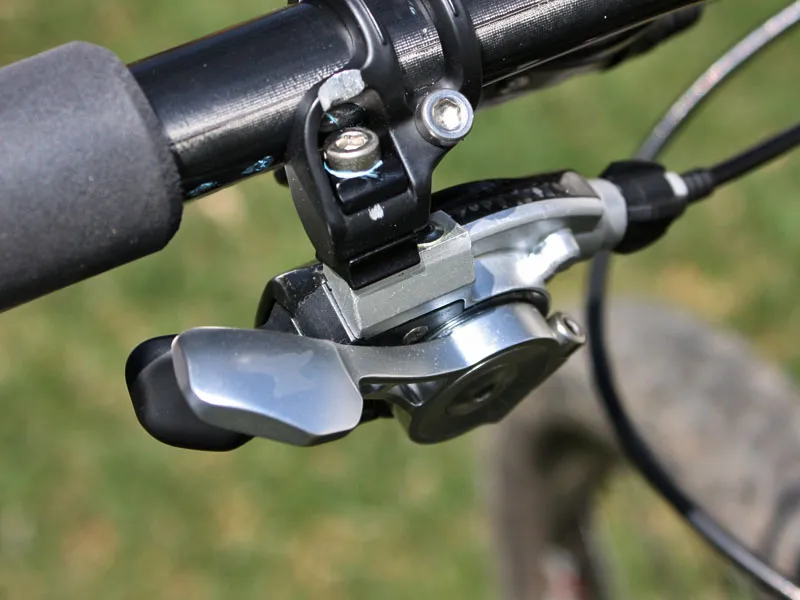
Having a different 'chainring' instantly available has its obvious advantages on the trail. You can dump down to the lower gear at the bottom of a surprise climb without letting off the gas or worrying about chainsuck.
If you need to accelerate in a hurry the taller ratio is always immediately at hand, regardless of pedal cadence or if the chain is bouncing about in rough terrain.
As long as you remember that you need to put out that much power as correspondingly quickly, you're good to go – otherwise you'll bog down a bit until your legs catch up.
Single-ring security
The packaging of the planetary gears has some unique side benefits to complement the instant shifting. First off, having just a single small-diameter chainring gives gobs of ground clearance.
Add in the tough built-in bashguard and you can attack large boulders or logs with more speed and aggression than usual, all without having to worry about bending a ring or breaking a tooth.
Mirroring the outer guard is another inboard plate, both of which work with the small box guide up top for unbeatable chain security. When properly set up, the chain cannot derail regardless of the terrain, and no two-ring guide on the market can top the HammerSchmidt in that respect.
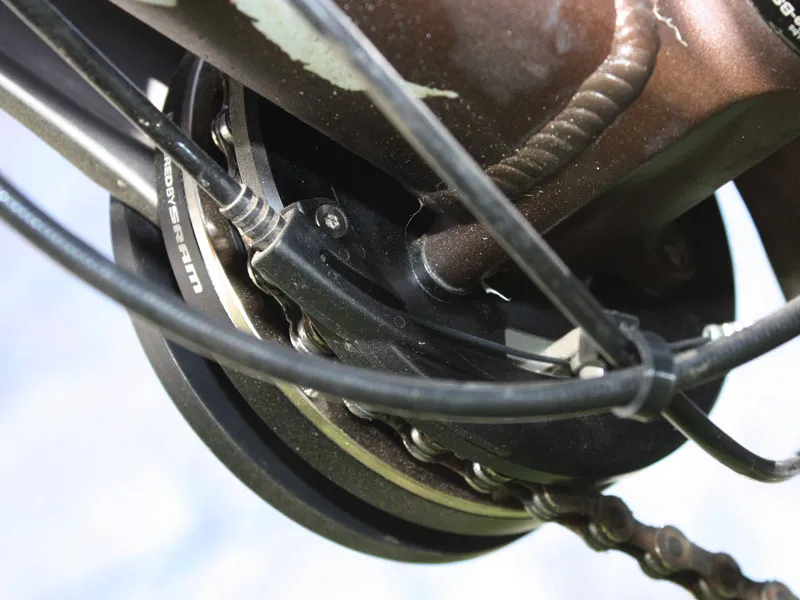
The chainline is also optimised so that every cassette cog is fully accessible with no risk of derailleur cage or chainring rub. So while there are only two front ratios, the total number of usable gears is quite generous compared to conventional two-ring setups where some combinations are only marginally functional.
Finally, the system is quite well sealed, especially if you use full-length cable housing. In addition to the close-fitting parts, proper rubber contact seals are placed at key points to prevent mud or water intrusion. If and when the system does get contaminated, the guts are reasonably easy to access for servicing, too.
The Howitzer-based bottom bracket is fully enveloped on the drive side so it won't see much grit. The non-drive side is fairly exposed as usual, though. If you're using one now and haven't had issues with the sealing setup, you won't with HammerSchmidt either. But if you do… well, you'll have similar luck here and there are currently no aftermarket options available that we know of.
What a drag
That instant shifting performance and compact packaging does come at the cost of friction, however. HammerSchmidt operates just as slickly as any other conventional crankset when in the 1:1 setting but there's noticeable system drag when the planetary gears are engaged.
The drag lessens as things break in and isn't nearly as bad as some early pundits had anticipated but even at its smoothest, it's akin to running a fast-rolling semi-slick versus a full knobby.
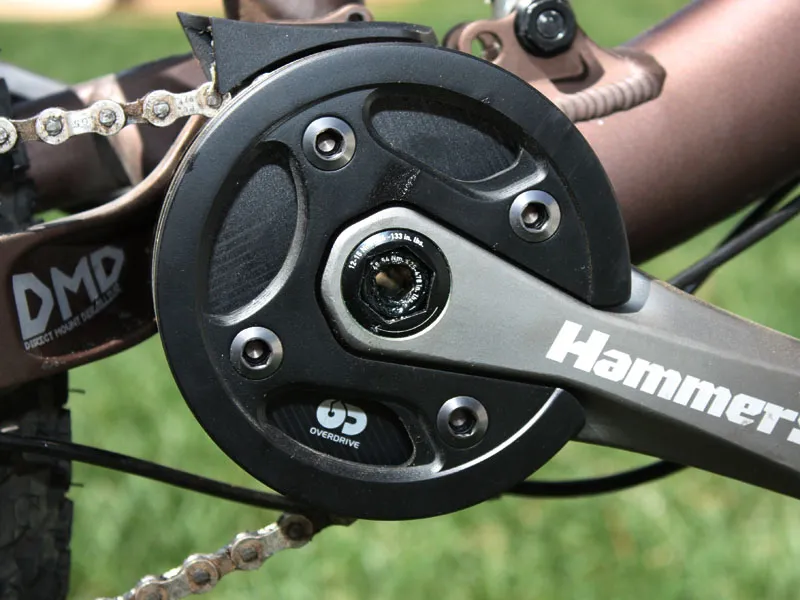
Given the heavier all-mountain machines HammerSchmidt is meant to be mounted on, it's usually the case that the OverDrive gear will be accompanied by a bit of a downslope anyway but it's still something to consider.
Not surprisingly, all that hardware and solid-forged construction adds up on the scale, too. Our AM-version crankarms weigh a substantial 1,130g (with 24T ring installed). Add 300g for the proprietary bottom bracket (based on Truvativ's excellent Howitzer system) and another 114g for the X.0-level shifter, and you're looking at 1.54kg (3.4lb) in all.
If that number sounds like a lot, that's because it is. But it's still comparable to conventional mid-level two-ring drivetrains when you consider everything the HammerSchmidt replaces – the outer chainring, a front derailleur, a few links of chain and a bulkier chain guide.
Still, riders who are pushing the envelope weight-wise with more cross-country oriented gear are bound to pack on some additional mass with the swap.
One downside we didn't anticipate is pawl lag. Though there's drag in the planetary gears when driving forward, the pawl mechanism runs so effortlessly in the opposite direction that you're more likely to activate the HammerSchmidt's freewheel than that of most rear hubs.
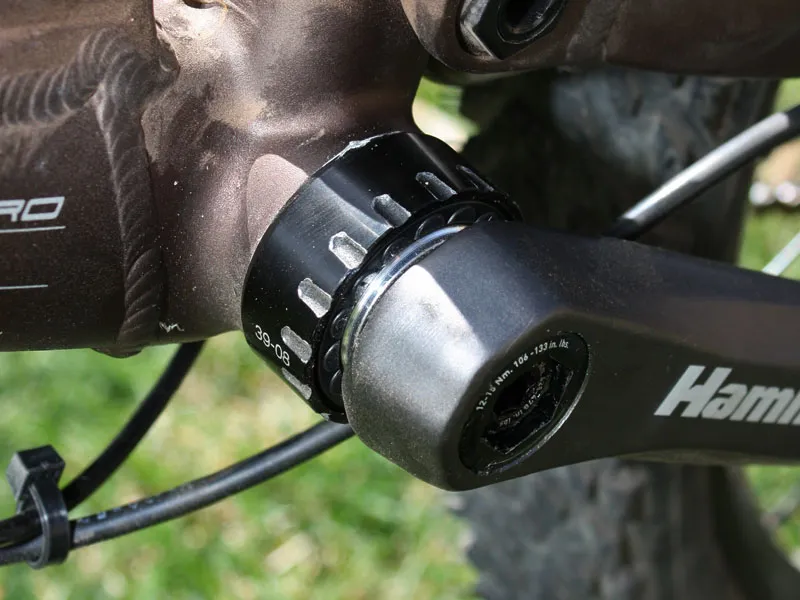
Unfortunately, that also means your normally fast-acting freehub body is overridden by the HammerSchmidt's notably slow engagement speed. In technical terrain that might require a quick stab at the pedals.
Installation is straightforward thanks to the detailed and easy-to-follow manual, but ignore the part where it says to install the driveside cup first as full-wrap socket-type bottom bracket tools won't reach the splines on the non-driveside cup with the spindle inserted.
To ensure proper operation, the bottom bracket shell and requisite ISCG (05 or 03) tabs must be machined with the proprietary Truvativ tool, which your local shop may or may not have on hand (we got a loaner set from Truvativ).
Lastly, the straight-profile crankarms don't provide much ankle clearance for duck-footed riders and the small chainring size results in increased chainstay slap even after swapping to a short-cage rear derailleur and removing some chain links. And yes, HammerSchmidt is quite expensive but again, it's not as bad as it seems once all of the substituted parts are factored in.
All hail the HammerSchmidt?
So did we like it? Overall, yes. We love the idea of HammerSchmidt for sure. It performs just as brilliantly as promised and it's tough to comprehend the benefits of the instant-on shifting until you try it yourself. That being said, we also wish for less drag, lighter hollow-forged arms and a quicker engagement speed.
Early adopters in the target audience will still be stoked but we can't help but think that the more patient among you will be even more excited with whatever improvements are incorporated into HammerSchmidt v2.0.

